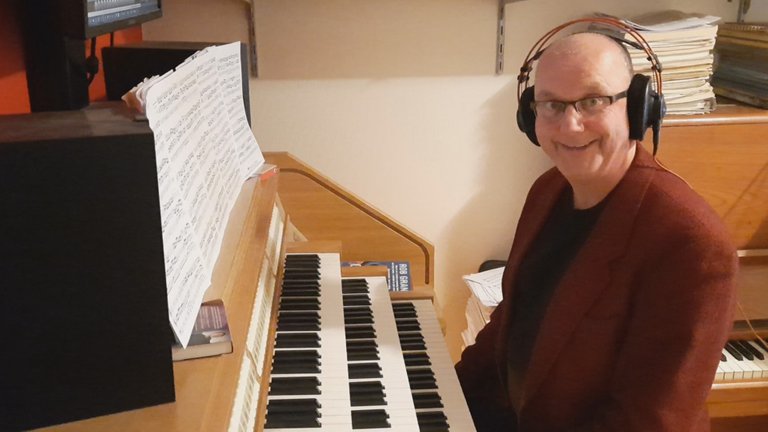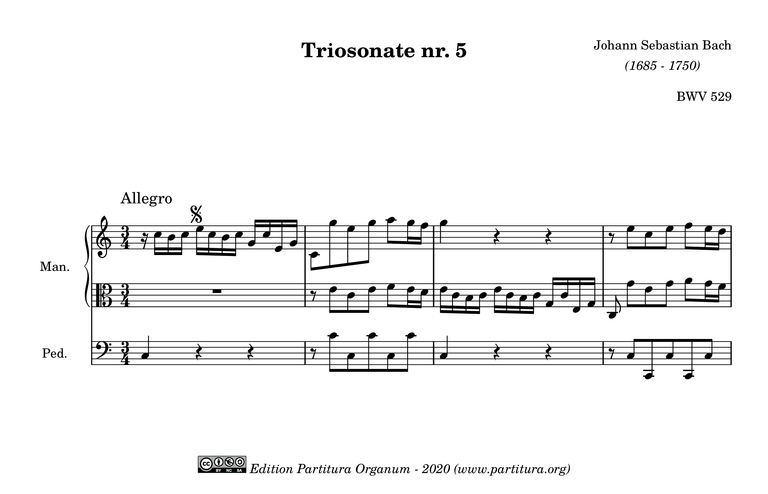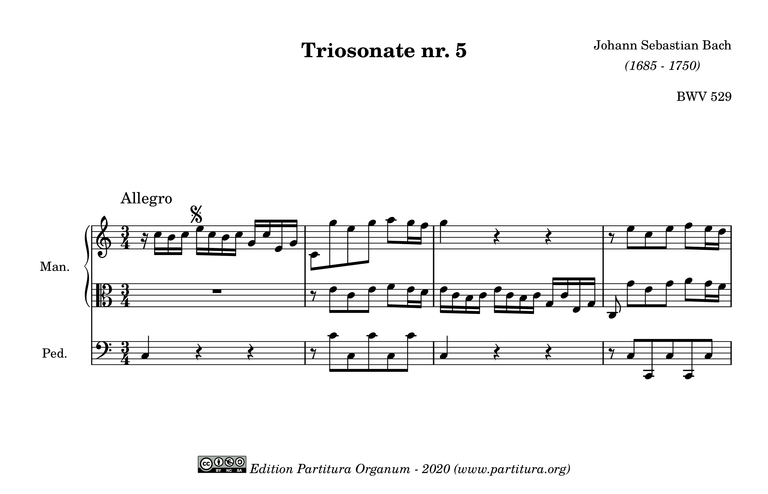Johann Sebastian Bach, Triosonate nr 5, BWV 529, 1st movement | Sectrets of Organ Playing Contest, week 63
This is my entry for the Secrets of Organ Playing Contest, week 63. I play the first part of the 5th Triosonata by Johann Sebastian Bach.
Bach 6 triosonatas are generally regarded as one of Bach's masterpieces for organ. They are also considered to be amongst his most difficult compositions for the instrument. As they are triosonates the texture is very open and all three voices can be clearly heard. The player sees himself before the monumental task to keep close attention to phrasing and articulation of all three voices and cannot waver in concentration for even a second. The slightest mistake can be easily heard.
So, I just stayed away from them.
Until a few weeks ago I started playing on the sample set of the Klapmeyer organ in the St Nicolai church in Altenbruch. It's sound immediately seemed perfect to me for Bach's Triosonatas and I decided to try to master at least one of those intimidating compositions. They are all 6 of them beautiful pieces, yet the 5th is the first one I ever heard as a youngster. I can't say it is the most beautiful one, as they are all 6 beautiful. Nevertheless, as it is the first one I ever heard and I still remember the impact it had on me, I have a weak spot for the fifth sonata.
Although the score of these sonatas is readily available on imslp, I transcribed the music anew from the (digital copy of the) autograph. I wanted to render it as closely as possible as Bach himself had notated it. Most modern notation only use treble and bass clef. Bach himself made frequent use of the various C-clefs as well. Paper was expensive in those days, and by using the C-clefs staves could be drawn close to each other. Bach did not need ledger lines between staves, because if a part becomes to low for the treble clef Bach just switches to the alto clef. And that his how he played and saw them himself: with frequent clef switches. Playing from the same visual input brings me just a little closer to Bach himself, and I imagine it helps playing this musicauthentically.
This first part takes, in the tempo I chose, a little over 7 minutes to play. And 7 minutes of rather fast past trio writing is almost impossible to play without error. For me at least. I hope you'll forgive me the occasional error. Perhaps I should have waited a bit before playing this for the contest. However, I'm really excited that I now play one movement of those fantastic pieces and I wanted to share that. There are two more movements to master and still a lot of work to be done on this movement. Yet this is where I am now and I am already quite pleased with that.


You can support me using Steem Basic Income


But the end of all things has drawn near. Therefore be sober-minded and be sober unto prayers.(1 Peter 4:7)
Question from the Bible, Is there such a thing as untimely death in the Bible?
Watch the Video below to know the Answer...
(Sorry for sending this comment. We are not looking for our self profit, our intentions is to preach the words of God in any means possible.)
Comment what you understand of our Youtube Video to receive our full votes. We have 30,000 #SteemPower. It's our little way to Thank you, our beloved friend.
Check our Discord Chat
Join our Official Community: https://steemit.com/created/hive-182074
@tipu curate
Upvoted 👌 (Mana: 0/4 - need recharge?)
!organduo 500
@partitura you have received

500 ORGANDUOfrom organduo!This tip bot is powered by witness untersatz!
Resteemed, your post will appear in the next curation with a SBD/STEEM share for you!
Your post has been supported and upvoted from the Classical Music community (Steemit and Steempeak) on Steem as it appears to be of interest to our community. We also support jazz and folk music posts!
If you enjoy our support of the #classical-music community, please consider a small upvote to help grow the support account!
You can find details about us below.
The classical music community at #classical-music, Steemit, Steempeak and Discord. Follow our community accounts @classical-music and @classical-radio or follow our curation trail (classical-radio) at SteemAuto!
Delegation links: 10SP, 25SP, 50SP, 75SP, 100SP, 150SP, 200SP, 250SP, 500SP, 1000SP
Excellent performance! You must feel so good about learning this piece. Interesting to see your score switches from alto to treble clef in some parts.
Yes, it feels like I've reached some milestone in organ playing. The nextr challenge is of course to practise the remaining two movements as well. Then I'll have truly reached the milestone "Performer of one of the Bach Triosonatas". Is there a badge for that on Steem?
Let's create a badge! Only awarded if you record a Trio Sonata movement! @tormus1958 presented one of the slow movements a while ago. Can't remember which one.
Re the clef switches: I follow Bach's autograph in clef usage. In the second movement it's even a bit more extreme: passages he first writes in treble clef are written with the alto clef in the recapitulation. Obviously Bach read the C-clef's as easily as he did treble and bass clef
I played this piece long ago and you brought many wonderful memories... Thank you for the lovely trio!
This was the first trio by J.S.Bach that I have played. So your playing evoked nice memories.